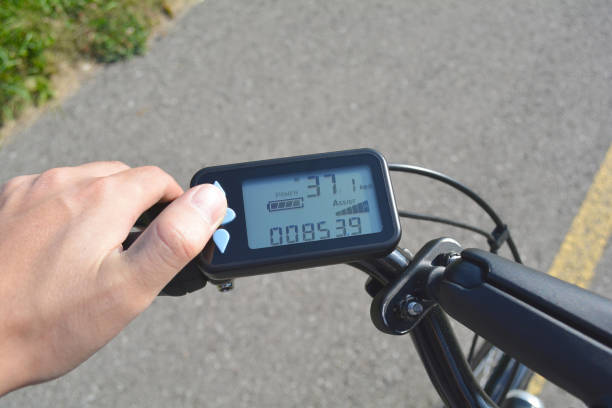Cycling intensity levels are commonly organized into “power zones,” with each zone corresponding to a percentage of your estimated FTP (Functional Threshold Power). Because each zone activates the body’s energy systems differently, they provide different benefits and adaptations. You must balance your time in each time zone for proper training.
Table of Contents
ToggleCycling Power Zones
Power zones, also known as power levels. They are a useful way of describing the intensity spectrum of cycling. Power Zones are partly based on physiology because they show how different levels of effort require different amounts of energy.
How are the Zones expressed?
Power zones are calculated as a percentage of the functional threshold power (FTP). After taking the FTP test, you can figure out your zones and adjust your workouts based on how to fit you are. In real life, FTP is the most intense level of cycling you could keep up for an hour. FTP is the point where the body loses its ability to keep up and fuel a steady effort.
Defined Power Zone of Cycling.
1. Active Recovery
This pace is easy to maintain almost indefinitely. It is powered by the body’s aerobic system and relies almost entirely on Type I (slow twitch) muscle fibers. If you keep riding in this zone, you’ll get small benefits like better lymph flow, better circulation, and more nutrients getting to your muscles.
It also helps reinforce movement patterns and can increase the time spent in the saddle without putting too much stress on the muscles or metabolism. Active Recovery is often used in training to give your body a break between hard efforts. It allows you to catch your breath, lower your heart rate, and precisely remove waste products from your muscles.
2. Endurance
It is almost entirely aerobic and relies on type I muscle fibers. It stimulates more muscles and causes more fatigue than riding at a recovery pace. Nonetheless, as the name implies, it can maintain this strength for an extended period of time. Your aerobic capacity improves from endurance rides because they increase the number of mitochondria, capillarization, and aerobic enzymes in your muscles.
At this intensity, the body can burn fat for fuel, and the ability to do so improves over time. The majority of long rides are at an endurance pace. You’ll spend a lot of time here while sitting in the pack during any mass-start event. Endurance rides are a great way to reinforce movement patterns and add stress to a training plan without making you too tired.
3. Tempo
Even though the pace is mostly aerobic, some type II muscle fibers start to be used when riding at this level of intensity. This is the first zone of power zone cycling that feels difficult to maintain for long periods. Tempo riding causes many of the same changes in the body as endurance riding, but the effects are stronger. It mainly improves muscle glycogen storage abilities. When you ride at tempo for a long time, you get much more tired than when you ride at an endurance pace, but it’s still not too bad.
4. Sweet Spot
The sweet Spot is a transitional zone in cycling that is more about how it can be used for training. It exists in the grey area between tempo and threshold, combining the most beneficial aspects. This is how it became the most useful and time-effective zone for general fitness improvements.
Sweet Spot activates more Type II muscle fibers than lower intensities, significantly improving muscular endurance, aerobic fitness, and glycogen storage. Holding a steady speed for a long time is hard and tiring, but not nearly as hard or tiring as riding at the threshold.
5. Threshold
Riding near your FTP is highly glycolytic, shifting fuel demands from fat to sugar. It activates a large number of type IIa muscle fibers and puts a strain on muscular endurance. Riding in this zone increases blood plasma volume and mitochondrial enzymes. It also increases the ability to maintain high-intensity exercises for extended periods. But it causes a lot of fatigue. While this is theoretically a pace you could maintain for an hour, most athletes find riding at threshold uncomfortable for more than 20 or 30 minutes at a time.
6. Maximum VO2
VO2 Max refers to the maximum amount of oxygen your body can use while exercising. This zone includes high-intensity efforts that exhaust this cardiorespiratory capacity. Riding at VO2 Max puts a lot of strain on type II muscle fibers. It also puts a lot of strain on both aerobic and anaerobic capacities. It promotes cardiac remodeling, increasing heart strength and stroke volume while significantly increasing blood plasma. VO2 Max efforts are very hard to keep up for more than a few minutes. Nonetheless, they provide a significant training stimulus in a short period.
7. Anaerobic Capacity Zone
Anaerobic metabolism is the only way power is made, and type IIb muscle fibers do most of the work. These are high-force, short-duration efforts. That activates energy systems that you can only sustain for a few minutes at most. Riding in the anaerobic zone increases lactate tolerance and the body’s ability to use anaerobic energy stores.
During a hard sprint, all-out, maximum efforts that last only a few seconds challenge the neuromuscular system more and make it easier to use the available muscles. These efforts are the hardest to repeat because they take much more strength than other cycling zones.
Power Zones in Training: How Do They Work?
Time spent in different zones varies across the cycling season in every training plan. The base phase develops long-term, general-purpose fitness through time spent primarily in aerobic zones. The Build and Specialty phases include more high-intensity anaerobic efforts to help you create the skills you’ll need on race day.
Some workouts within a training plan target more than one energy system, while others focus solely on one level of intensity. Riding in each zone sends a unique adaptive signal to the body. Some of these signals work best alone, while others can be mutually beneficial. Some workouts, for example, begin with strenuous efforts in the VO2 Max zone, followed by a longer endurance effort. These zones balance each other out, whereas VO2 Max efforts before anaerobic sprints, for example, would cancel each other out.
Summary of Power Zone Cycling
Power Zones describe the body’s response to varying intensities of cycling. Cycling effort is measured on a scale, with small increments gradually shifting energy system demands. Power Zones quantify this continuum in a way that is both physiologically accurate and training-relevant. The FTP calculator makes your training as effective as possible by carefully balancing time spent in each zone, maximizing your gains, and minimizing the effects of fatigue.
Frequently Asked Questions
What are the seven cycling power zones?
According to Coggan, there are seven power zones. Following are the training functions represented by each level.
- Active Recovery
- Endurance
- Tempo
- Threshold
- Vo2Max
- Anaerobic Capacity
- Neuromuscular Power
How to calculate the cycling power zone?
To calculate your power zone in cycling, first, deduct 5% from your estimated FTP score. It will give you an accurate estimate of the average output you could maintain for 60 minutes (i.e., FTP). If your average output is 120, find 5% (120 * 0.05 = 6), then subtract it from the total (120 – 6 = 114).
What is a power zone ride?
The instructor calls out which zone the rider wants to achieve for a specific time at a particular cadence range during each Power Zone Ride. The rider must adjust their resistance at the desired cadence for their output to fall within their respective zone.
What zone is 80% of Functional Threshold Power?
The Tempo zone lies in (76% – 87% FTP) as the highest and lowest zone in power zone cycling. Riding at a tempo pushes you to the limit of your aerobic endurance. While somewhat unpleasant, working here is not stressful and allows you to spend extended periods at a consistent and productive work level with only minor Recovery.

